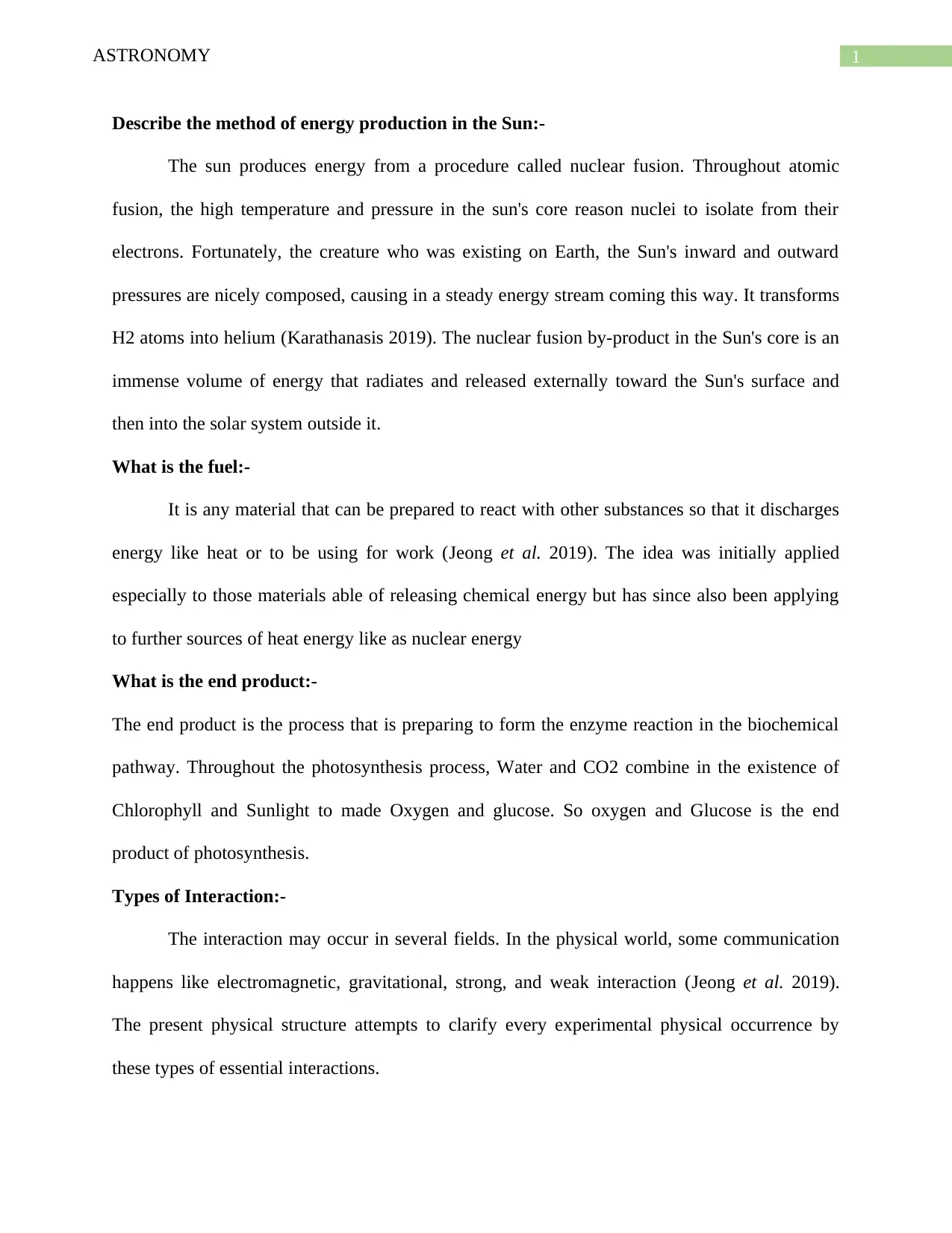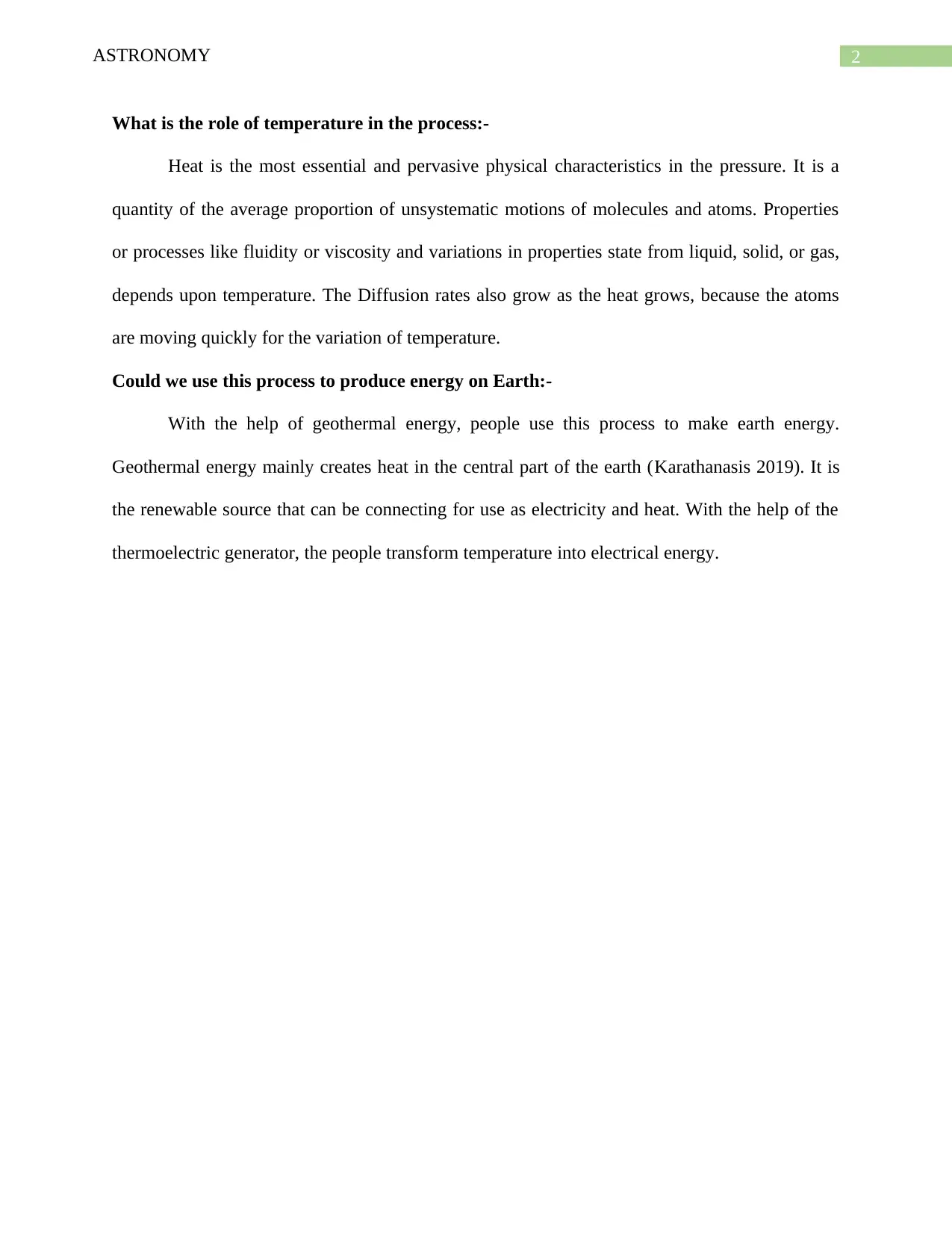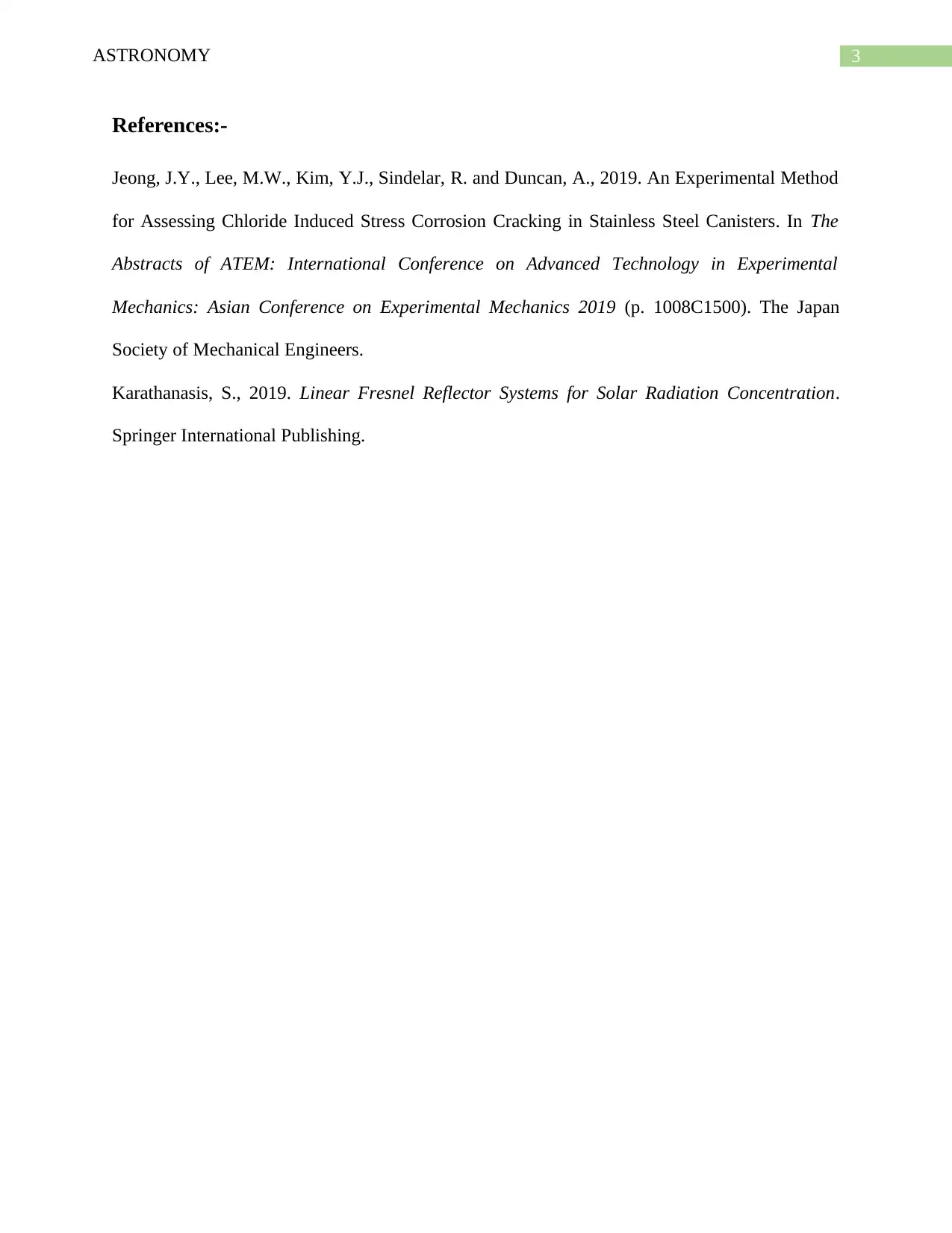Astronomy: Analyzing Energy Production Processes and Interactions
VerifiedAdded on 2022/08/18
|4
|589
|17
Report
AI Summary
This report delves into the process of energy production within the Sun, focusing on nuclear fusion as the primary mechanism. It explains how the high temperature and pressure in the Sun's core facilitate the fusion of hydrogen atoms into helium, resulting in a significant release of energy that radiates outwards. The report also discusses the nature of fuel in this context, the end products of the fusion process, and the various types of interactions involved, including electromagnetic, gravitational, and strong and weak interactions. Furthermore, it examines the crucial role of temperature in influencing the rate of diffusion and other physical properties. Finally, the report explores the potential of harnessing this energy on Earth, referencing the use of geothermal energy and thermoelectric generators to convert temperature differences into usable energy.
1 out of 4






![[object Object]](/_next/static/media/star-bottom.7253800d.svg)